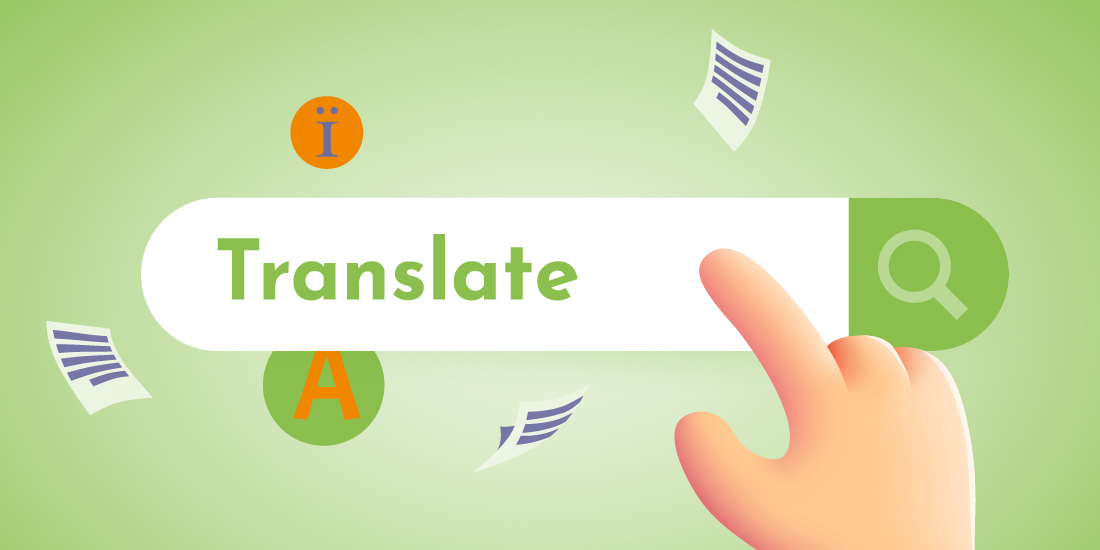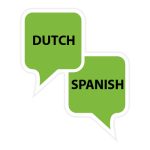
How Accurate is Google Translate from Dutch into Spanish?
01 May How Accurate is Google Translate from Dutch into Spanish?
When it comes to translating languages, Google Translate has become a go-to tool for many people around the world. However, the question remains: How accurate is Google Translate from Dutch into Spanish? In this blog post, we will explore the quality of Dutch to Spanish translations provided by Google Translate and discuss the technology behind this popular tool.
Understanding the Complexity of Dutch and Spanish Languages
Navigating the linguistic intricacies of Dutch and Spanish unveils a fascinating study in contrast and complexity. As a Germanic language, Dutch shares its roots with English and German, fostering a tapestry of grammatical structures that, while intricate, can feel somewhat familiar to speakers of these languages. Its pronunciation, syntactical nuances, and rich vocabulary, however, introduce a level of complexity that sets it apart.
On the other hand, Spanish, as a Romance language, blooms from Latin, flourishing into a global tongue with its own set of grammatical rules, verb conjugations, and dialectical variations that span continents.
The leap from Dutch to Spanish or vice versa is not merely a matter of direct translation; it involves a deep understanding of the cultural and contextual nuances embedded in each language. The structural differences, such as the Dutch use of verb-second word order in main clauses or the Spanish subjunctive mood, present unique challenges for automated translation systems like Google Translate. Furthermore, idiomatic expressions, which are plentiful in both languages, often don’t have direct equivalents, requiring not just a translation of words, but an interpretation of meanings.
This linguistic journey from Dutch into Spanish embodies the celebration of diversity and the challenges of communication across language barriers. As we delve deeper into the capabilities of Google Translate, it’s essential to appreciate the inherent complexities that define and differentiate Dutch and Spanish.

The Technology Behind Google Translate
At the core of Google Translate’s capabilities lies a sophisticated blend of machine learning and advanced neural machine translation (NMT) technologies. These systems are designed to mimic the way the human brain functions by recognizing patterns and learning from vast amounts of data. Unlike earlier translation methods that relied heavily on direct translations based on dictionaries and grammar rules, neural machine translation works by analyzing entire sentences, considering their context within the broader paragraph or even the document. This context-aware approach allows Google Translate to produce more fluid and natural translations, which is especially beneficial when dealing with languages as structurally distinct as Dutch and Spanish.
Google Translate’s neural networks are trained on millions of documents, including books, websites, and documents officially translated by human professionals, which span a wide range of topics and styles. This extensive training helps the system improve its understanding of language nuances, grammar, and vocabulary over time. Moreover, Google Translate is dynamic; it learns from corrections and inputs from users worldwide, making it a continually evolving translation tool. Despite these technological advances, the complexity of language and cultural nuances still presents challenges, particularly with idiomatic expressions and highly technical texts, underscoring the blend of technology and human expertise necessary for accurate translation.

Handling Complex Texts and Technical Jargon
Navigating through the maze of technical terminology and complex texts presents a formidable challenge for Google Translate when transitioning from Dutch into Spanish. This automated tool, although advanced in its neural machine translation capabilities, may falter when faced with the specific lexicon used in fields such as law, medicine, engineering, or scientific research. The precision required to accurately translate industry-specific jargon or intricately structured sentences often surpasses the current scope of Google Translate’s algorithmic interpretations.
For instance, legal documents and medical reports brim with terminology that carries very specific meanings, crucial to the context they are used in. Misinterpretations in such sensitive areas can lead to misunderstandings with potentially serious consequences. Similarly, academic and scientific literature utilizes a vocabulary that is not only specialized but also continually evolving, adding another layer of complexity to the translation task.
The challenge is exacerbated by the fact that many of these terms do not have direct equivalents in the target language, requiring not just translation, but a comprehensive understanding and adaptation to the cultural and professional context of the reader. It’s in these scenarios that the limitations of an AI-driven tool like Google Translate become apparent, underscoring the indispensable value of human expertise for ensuring precision and accuracy in translation.
User Feedback and Real-World Application
The experiences of users leveraging Google Translate for converting Dutch into Spanish span a wide spectrum of satisfaction and frustration. Those who use the tool for casual purposes, such as understanding the gist of emails, navigating foreign websites, or keeping up with social media content from another culture, often find it to be a valuable asset.
It facilitates cross-linguistic accessibility at an unprecedented scale, breaking down barriers that would otherwise require time-consuming study or expensive professional services.
However, feedback from users also underscores the limitations of Google Translate, particularly when accuracy is paramount. The intricacies of nuanced communication, such as subtleties in tone, humor, and cultural references, can be lost or misconstrued, leading to confusion or misinterpretation. In professional settings or in the context of important personal communications, these gaps can be significant. For example, expatriates sharing news with family back home or businesses attempting to bridge Dutch and Spanish markets have noted occasions where the tool’s output required substantial revision to convey the intended message accurately.
Despite these challenges, the real-world application of Google Translate underscores a growing dependency on digital translation tools, highlighting the balance users must strike between convenience and precision. The mixed feedback paints a picture of a technology that is both indispensable and imperfect, a stepping stone toward a more connected global community where language barriers are continually eroded by innovation, yet still present obstacles that require careful navigation.
Comparing Google Translate to Other Translation Tools
In evaluating Google Translate against its competitors in the realm of Dutch to Spanish translation, several factors come into play. Various translation tools, each with its unique algorithms and databases, offer a range of performances on different language pairs. Some may specialize in niche languages or specific types of texts, such as legal documents or medical literature, providing a level of precision that generalist tools struggle to match. For instance, tools like DeepL or Microsoft Translator have been praised for their accuracy in certain contexts, potentially offering more nuanced translations for complex texts or industry-specific terminology.
On the other hand, Google Translate’s broad user base and integration across numerous Google services render it incredibly accessible and user-friendly, making it a popular first choice for many. Its strength lies in its ability to quickly provide a general understanding of the text, facilitated by its extensive language pair support. However, when the task requires more than a superficial translation, especially for documents where nuances matter significantly, exploring alternative translation services can be beneficial. These alternatives may leverage different technological approaches or focus more heavily on specific language pairs, potentially offering superior results for Dutch into Spanish translations under certain conditions.
Tips for Improving Translation Accuracy
To enhance the quality of translations from Dutch into Spanish with Google Translate, consider implementing the following strategies:
- Aim for clarity and straightforwardness in your sentences. The simpler the structure, the higher the likelihood of an accurate translation.
- Refrain from using colloquialisms, regional idioms, or complex figurative language that may not translate directly or might be misunderstood by the algorithm.
- Cross-reference the translated output with reliable sources or seek the insight of native speakers to verify the accuracy and appropriateness of the translation.
- Utilize the surrounding context effectively. Providing Google Translate with clear, context-rich sentences can significantly aid the tool in discerning the correct meanings and nuances.
- Actively participate in the improvement of Google Translate by submitting feedback on any errors encountered. This not only contributes to the tool’s learning but also assists in refining its future performance for everyone.
By adopting these strategies, users can better navigate the subtleties of translating between Dutch and Spanish, thereby achieving translations that are more faithful to the original intent and meaning.
FAQ’s
How does Google Translate perform when translating simple phrases from Dutch to Spanish?
Google Translate generally performs well when translating simple phrases from Dutch to Spanish. The tool is capable of handling basic grammar and vocabulary effectively, leading to accurate translations for straightforward sentences.
Are there specific types of text where Google Translate struggles more in translating from Dutch to Spanish?
Yes, Google Translate tends to struggle with idiomatic expressions, slang, and culturally specific references when translating from Dutch to Spanish. Complex sentences with nuanced meanings or specialized terminology (like legal or technical language) can also pose challenges, resulting in less accurate translations.
What impact does context have on the accuracy of translations from Dutch to Spanish in Google Translate?
Context plays a significant role in the accuracy of translations. Google Translate can sometimes misinterpret the meaning of words that have multiple meanings depending on the context. This leads to errors or inaccuracies in the translated text, especially in longer and more complex sentences where contextual clues are crucial.
What is the average cost of translating a document from Dutch to Chinese?
The accuracy of Google Translate from Dutch to Spanish has improved significantly over time, thanks to advances in artificial intelligence and machine learning. The system continually learns from new data, which helps it better understand nuances and context. However, despite improvements, some inaccuracies still occur, especially in complex or less commonly translated texts.
What can users do to get the best possible translation from Dutch to Spanish using Google Translate?
To enhance the accuracy of translations from Dutch to Spanish, users should:
-
- Keep sentences short and clear.
- Avoid slang, idiomatic expressions, and ambiguously worded phrases.
- Use standard grammar and punctuation.
- Provide as much context as possible within the text.
- Double-check critical translations with native speakers or professional translators if possible.

